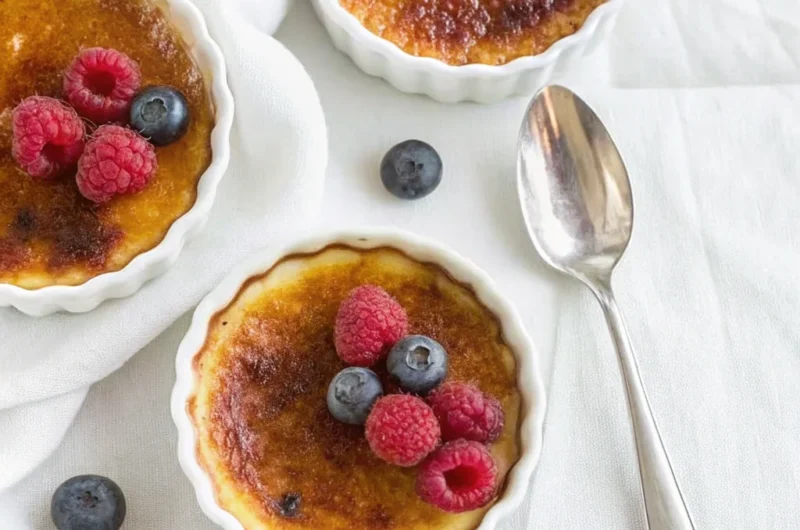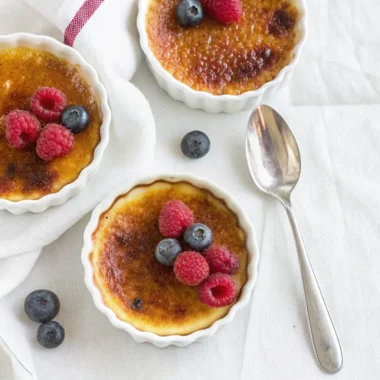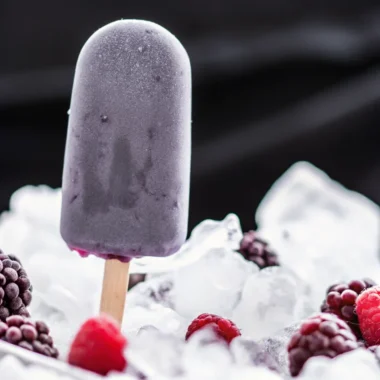Crème brûlée, one of the most exquisite and beloved desserts in the world, stands out for its distinct flavor, luxurious texture, and, most notably, its caramelized sugar crust. But many food enthusiasts wonder: Is crème brûlée just burnt sugar? To fully understand this dessert’s complexity, we need to dive deep into its components, particularly the role of that seemingly “burnt” sugar. In this blog, we will explore the answer in detail while also unveiling the nuances that make crème brûlée a culinary masterpiece.
The Fundamentals of Crème Brûlée
Before we answer the pressing question—“Is crème brûlée burnt sugar?”—it’s essential to understand the dessert’s basic makeup.
Crème brûlée, French for “burnt cream,” consists of a rich custard base made primarily from heavy cream, egg yolks, sugar, and vanilla, which is then topped with a thin layer of caramelized sugar. This caramelized sugar layer is what gives the dessert its name, but is it really just burnt sugar?
What Does “Burnt” Sugar Mean?
In the context of crème brûlée, the term “burnt” can be misleading. True burnt sugar, if left unattended for too long on heat, turns bitter, black, and unpleasant. However, the sugar in crème brûlée undergoes caramelization, not burning. This process requires precision and control, and when done correctly, it results in a perfectly balanced, crisp, and flavorful topping that is far from the bitterness of truly burnt sugar.
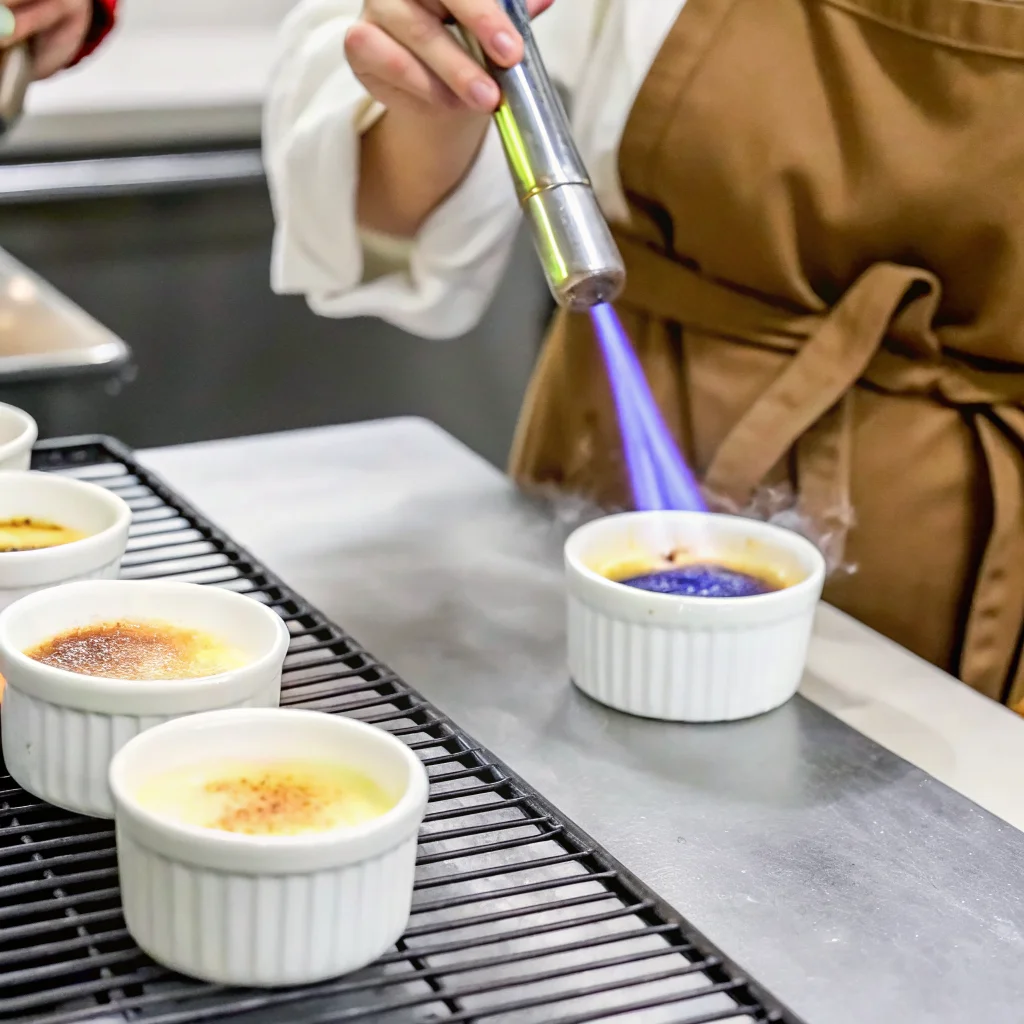
Caramelization: The Science of Crème Brûlée’s Signature Sugar Topping
The caramelization process that occurs atop crème brûlée is the magic that elevates the dessert from a mere custard to a culinary delight. Caramelization happens when sugar is heated to a specific temperature, typically between 320°F and 350°F. At this point, the sugar melts and begins to break down, forming complex molecules that offer a rich, deep flavor profile ranging from buttery sweetness to slight bitterness, without being truly burnt.
The result is a caramelized crust that shatters with a satisfying crack when tapped with a spoon. This contrasts beautifully with the silky, creamy custard beneath. So, is crème brûlée burnt sugar? Technically, no. The sugar is carefully caramelized, not burnt, providing a pleasant balance of sweetness and bitterness.
The Role of Sugar in Crème Brûlée
Types of Sugar Used
Different types of sugar can be used for the caramelized topping in crème brûlée. The most common is granulated white sugar, which melts evenly and provides a consistent caramelization. However, variations like raw sugar, demerara, or turbinado sugar are also used, offering slightly different flavors and textures due to their molasses content.
The Technique Behind Caramelizing Sugar
The traditional way to caramelize sugar on crème brûlée is by using a kitchen torch. The flame provides focused, high heat that quickly melts and caramelizes the sugar without heating the custard underneath. This method allows for the desired crunchy texture without compromising the custard’s creamy consistency.
Alternatively, the sugar can be caramelized under a broiler, though this method requires careful monitoring to avoid overheating and truly burning the sugar.
A Brief History of Crème Brûlée and Its Evolution
Crème brûlée has a rich history that spans centuries and continents. Some trace its origins back to France, while others argue that England or Spain played a role in its development. Regardless of its exact origins, crème brûlée has become a quintessential French dessert, known for its perfect balance of textures and flavors.
Early Origins of Crème Brûlée
The earliest known recipe for a dessert resembling crème brûlée can be found in François Massialot’s 1691 cookbook Le Cuisinier Royal et Bourgeois. The dessert was prepared with a simple custard base and a sugar crust that was caramelized using a hot fire iron. Over time, variations of crème brûlée began to appear in other countries.
In England, a similar dish called “Trinity Cream” or “Cambridge Burnt Cream” was served at Trinity College. In Spain, crema catalana—a custard dessert topped with caramelized sugar—remains a close relative of the French version.
Crème Brûlée in Modern Times
Today, crème brûlée is often regarded as a staple in fine dining and remains one of the most popular choices on dessert menus worldwide. Chefs have embraced creativity in their variations, introducing flavors like chocolate, coffee, lavender, or citrus. Despite these adaptations, the caramelized sugar topping remains a defining feature of the dessert.
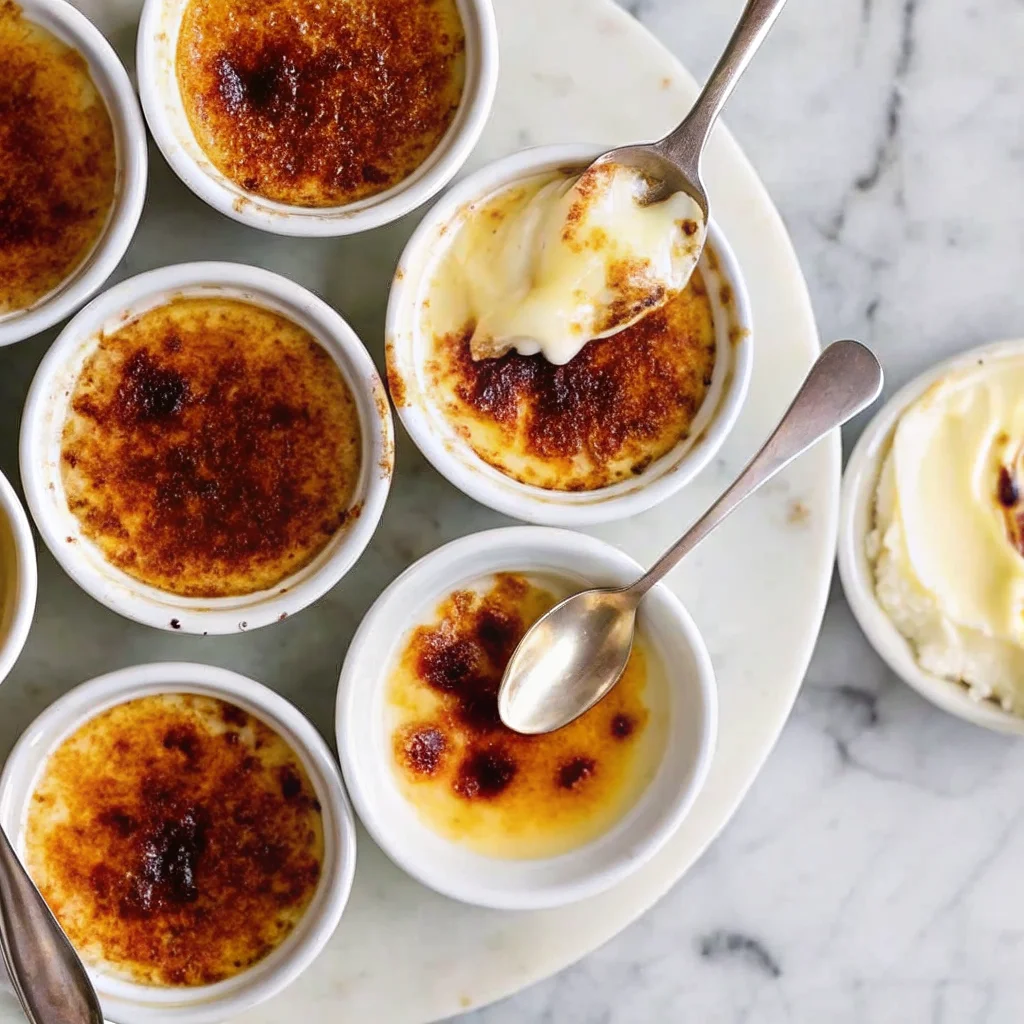
The Key to a Perfect Crème Brûlée Crust
How to Achieve the Ideal Caramelization
Creating the ideal caramelized crust on crème brûlée requires precision and attention to detail. Here are some essential tips:
- Even Sugar Distribution: Spread a thin, even layer of sugar over the surface of the chilled custard. Too much sugar will result in an overly thick, difficult-to-crack crust, while too little sugar won’t caramelize properly.
- Consistent Flame Control: If using a torch, hold it at a consistent distance from the sugar. Start from the outer edges and work your way toward the center. The flame should be steady and even, moving in small circles to prevent burning any one spot.
- Chilled Custard, Warm Crust: Always begin with thoroughly chilled custard. The contrast between the cold custard and warm caramelized sugar is essential to the overall experience of the dessert.
Can You Burn the Sugar?
Yes, you can burn the sugar if you’re not careful, and that’s where many people run into trouble. Truly burnt sugar will have a bitter, ashy taste, which is far from the intended flavor of crème brûlée. While caramelization does involve a slight browning, there’s a fine line between caramelized and burnt. Staying within the caramelization range (320°F to 350°F) is key to achieving the perfect top layer without venturing into the territory of burnt sugar.
Is Crème Brûlée Burnt Sugar? A Balanced Conclusion
In summary, crème brûlée’s defining feature—the caramelized sugar topping—can often be mistakenly referred to as burnt sugar, but in reality, it is a carefully controlled process of caramelization. The sugar is heated just enough to melt and develop complex flavors, but not so much that it turns bitter or ashy. Therefore, while the term “burnt” may be used in its name, the sugar is caramelized rather than burnt.
Crème brûlée is a celebration of balance. The custard is rich yet light, sweet yet nuanced. The caramelized sugar crust is crisp yet delicate. When combined, these elements create a multi-layered dessert that delights the senses with every bite.
Variations of Crème Brûlée
Though traditional crème brûlée remains a favorite, creative chefs have explored various twists on the classic dessert. These variations often introduce new flavors or textures while maintaining the signature caramelized sugar top.
Flavored Crème Brûlées
Flavored crème brûlées take the classic custard base and infuse it with ingredients such as:
- Chocolate Crème Brûlée: The custard is enhanced with rich chocolate, adding a decadent twist to the original dessert.
- Coffee Crème Brûlée: Coffee or espresso is blended into the custard for a robust flavor that complements the sweet caramelized sugar.
- Lavender Crème Brûlée: The subtle floral notes of lavender elevate the dessert to a sophisticated level.
- Citrus Crème Brûlée: Lemon, lime, or orange zest adds brightness and a refreshing contrast to the richness of the custard.
Textural Variations
Another variation focuses on texture. For example:
- Crème Brûlée Tart: The custard is baked into a shortcrust pastry shell, adding a crispy, buttery component to the dessert.
- Frozen Crème Brûlée: Some chefs serve crème brûlée frozen, creating an unexpected and delightful contrast between the icy custard and the caramelized sugar.
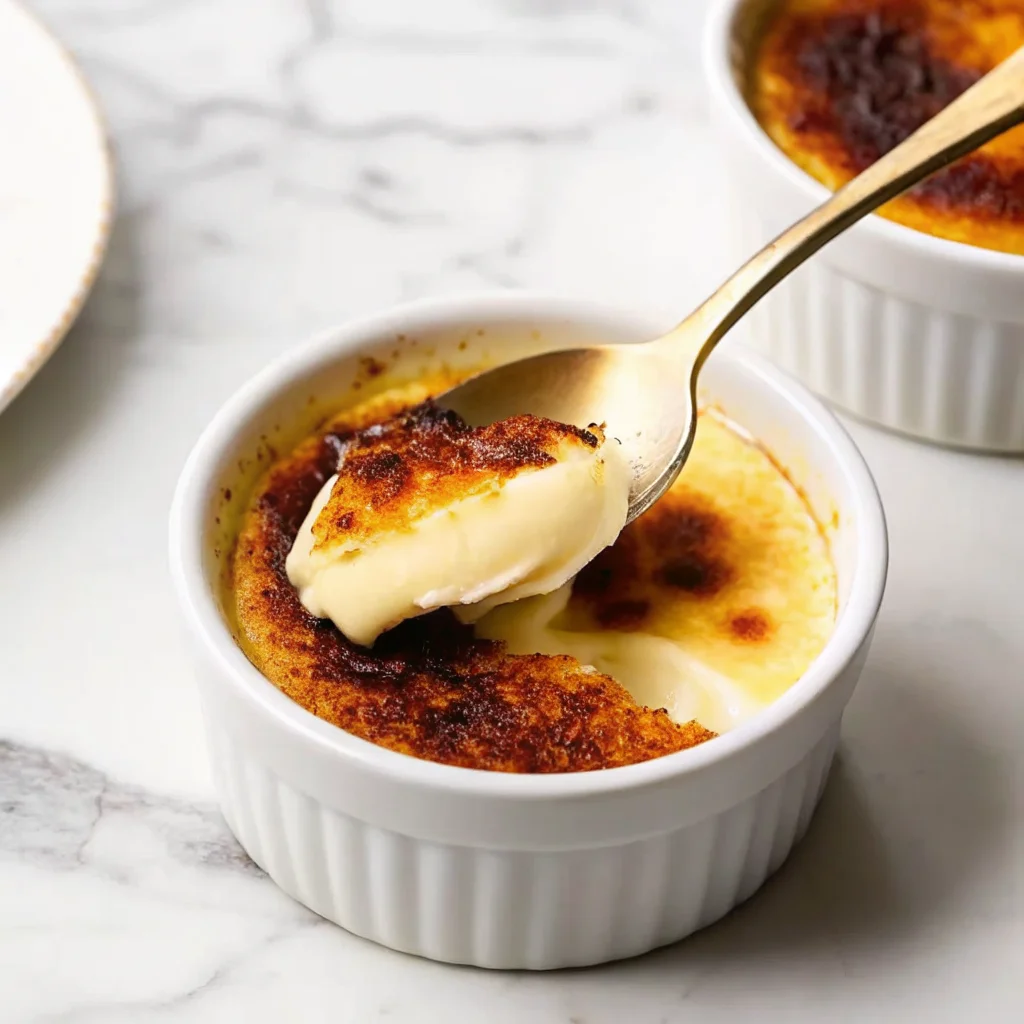
Tips for Making Crème Brûlée at Home
If you’re eager to try your hand at making crème brûlée at home, here are some practical tips to guide you through the process:
Equipment
- Ramekins: Use shallow, wide ramekins to maximize the surface area for the caramelized sugar.
- Kitchen Torch: A small, handheld torch is the most effective tool for caramelizing sugar evenly.
- Baking Sheet and Water Bath: Bake the custards in a water bath to ensure even cooking and prevent the custard from curdling.
Ingredients
- Fresh Cream and Eggs: Use fresh, high-quality cream and egg yolks for the best results. The custard should be smooth, rich, and free of any eggy taste.
- Real Vanilla: Opt for real vanilla beans or pure vanilla extract for a truly luxurious flavor.
Method
- Prepare the Custard: Heat the cream and vanilla, then whisk it into the egg yolks and sugar mixture. Pour the custard into ramekins and bake in a water bath until just set.
- Chill the Custard: After baking, chill the custard thoroughly in the refrigerator. This ensures the perfect contrast between the creamy custard and the crisp sugar topping.
- Caramelize the Sugar: Just before serving, sprinkle an even layer of sugar on top of the custard and caramelize it with a torch or broiler.
The Final Word: Why Crème Brûlée Isn’t Just Burnt Sugar
To conclude, while the dessert crème brûlée does involve caramelizing sugar, it is a far cry from burnt sugar. Caramelization creates the ideal balance between sweetness and bitterness, providing a deliciously crisp contrast to the creamy custard below. The art of crème brûlée lies in mastering this balance, ensuring that the sugar topping is perfectly caramelized without crossing the line into burning.
As you enjoy your next serving of crème brûlée, take a moment to appreciate the craftsmanship involved in transforming simple ingredients—cream, eggs, sugar—into a dessert that is both sophisticated and indulgent.
The Final Word: Why Crème Brûlée Isn’t Just Burnt Sugar
To conclude, while the dessert crème brûlée does involve caramelizing sugar, it is a far cry from simply burning it. The process of caramelization requires a precise balance of heat and time, ensuring that the sugar melts and transforms into a rich, crisp layer of sweetness without turning bitter or charred. This caramelized sugar crust contrasts beautifully with the creamy, luxurious custard beneath, creating the iconic experience that crème brûlée lovers around the world crave.
Crème brûlée’s appeal lies not just in its ingredients but in the artistry required to craft it. The caramelized sugar topping is the dessert’s crowning glory, offering a delightful crunch that gives way to a smooth, rich custard. This contrast of textures and flavors elevates crème brûlée from a simple custard dessert to something truly extraordinary.
The next time you enjoy crème brûlée, you’ll know that what you’re savoring isn’t just burnt sugar, but a carefully crafted layer of caramelized sweetness that has been expertly brought to life. Whether you’re making it at home or ordering it at a fine dining establishment, crème brûlée will always stand out as a dessert that’s both timeless and sophisticated.
Crème Brûlée Synonyms and Alternatives
While crème brûlée has become synonymous with its caramelized sugar top, there are other desserts that share similar characteristics, offering new takes on this classic theme. Let’s explore a few desserts that bear resemblance to crème brûlée, either in preparation, texture, or flavor:
1. Crema Catalana: A Spanish Cousin
Crema catalana is often referred to as the Spanish cousin of crème brûlée. It features a similar custard base but with a distinct flavor profile, thanks to the addition of citrus zest and cinnamon. Like crème brûlée, crema catalana also boasts a caramelized sugar top, which is traditionally browned with a hot iron rather than a kitchen torch. The custard is often lighter in texture than crème brûlée, making it a refreshing variation for those looking for something a bit different.
2. Trinity Cream: The English Original
Trinity cream, or Cambridge burnt cream, is considered by some food historians to be the original crème brûlée. Served at Trinity College in Cambridge, this dessert also features a rich custard base topped with caramelized sugar. However, its origins are steeped in English culinary tradition, giving it a slightly different historical context than its French counterpart.
3. Pot de Crème: Creamy and Luxurious
While pot de crème doesn’t feature a caramelized sugar top, it shares crème brûlée’s rich, custard-like texture. Pot de crème is typically served in small pots and flavored with ingredients such as chocolate, vanilla, or coffee. Its smooth, creamy consistency makes it a perfect alternative for those who enjoy the indulgence of crème brûlée but prefer to skip the crunch of caramelized sugar.
4. Flan: A Custard with Caramel Sauce
Flan, a dessert popular in Latin America and Spain, offers a custard base similar to crème brûlée but with a key difference—flan is served with a layer of caramel sauce, rather than a hard caramelized sugar crust. The custard is rich and creamy, much like crème brûlée, but the caramel sauce lends a softer, more liquid texture compared to the crackling sugar top of crème brûlée.
Experimenting with Crème Brûlée at Home
Making crème brûlée at home can seem intimidating, but with a bit of practice and the right equipment, it’s a dessert that can be mastered by home cooks. Here are some additional tips and tricks to help you create the perfect crème brûlée:
1. Selecting the Right Ingredients
The quality of ingredients plays a significant role in the final outcome of your crème brûlée. Here are some tips for selecting the best ingredients:
- Cream: Use heavy cream with a high-fat content for a rich, velvety custard.
- Vanilla: Opt for real vanilla beans rather than extract for a more authentic flavor. You can scrape the seeds from the vanilla pod into the cream for added depth.
- Egg Yolks: Fresh egg yolks will give the custard its smooth texture and rich flavor. Be careful not to overheat the custard during preparation, as this can cause the eggs to curdle.
2. Achieving the Perfect Caramelization
Caramelizing the sugar on top of crème brûlée can be tricky, but with a few tips, you’ll be able to achieve the perfect crackling crust every time:
- Even Layer of Sugar: Sprinkle an even layer of sugar over the top of the custard. If the sugar is uneven, some parts will burn while others remain uncooked.
- Use a Kitchen Torch: A small kitchen torch is the best tool for caramelizing sugar, as it allows you to control the heat more precisely. Hold the torch a few inches away from the surface of the sugar and move it in small circles to ensure even caramelization.
- Chill Before Caramelizing: Make sure the custard is completely chilled before adding the sugar. This will prevent the custard from warming up too much during the caramelization process, which can affect the texture.
3. Exploring Flavor Variations
Crème brûlée is a versatile dessert that lends itself to a wide range of flavor variations. Here are a few ideas for experimenting with different flavors in your crème brûlée:
- Chocolate: Add melted dark chocolate to the custard base for a rich, indulgent twist on the classic recipe.
- Espresso: Incorporate a shot of espresso into the custard for a bold, coffee-flavored crème brûlée.
- Fruit: Infuse the cream with fruit flavors by adding zest from lemons, oranges, or other citrus fruits. You can also add a layer of fruit compote beneath the custard for an unexpected burst of flavor.
- Spices: Add warm spices like cinnamon, nutmeg, or cardamom to the custard for a comforting, spiced crème brûlée.
Conclusion: The Elegance of Crème Brûlée
In the end, crème brûlée is a dessert that transcends the simplicity of its ingredients. With just a few key components—cream, eggs, sugar, and vanilla—this French classic manages to captivate with its rich custard base and perfectly caramelized sugar topping. While the sugar may appear burnt to the untrained eye, it is the art of caramelization that defines this beloved dessert.
The next time you encounter a crème brûlée, either at a fine dining restaurant or in your own kitchen, you’ll appreciate the delicate balance of flavors and textures that make this dessert so exceptional. From the first crack of the sugar crust to the last spoonful of silky custard, crème brûlée is a testament to the beauty of simplicity in the culinary world.
Print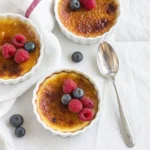
Is Crème Brûlée Burnt Sugar?
- Total Time: 50 minutes
- Yield: 4–6 servings 1x
Description
Crème brûlée is a classic French dessert known for its rich, creamy custard and signature caramelized sugar topping. But is the sugar truly burnt? In this recipe, we’ll explore the art of caramelization while guiding you through the steps to make the perfect crème brûlée at home.
Ingredients
- 2 cups heavy cream
- 5 large egg yolks
- ½ cup granulated sugar (plus extra for caramelizing)
- 1 teaspoon pure vanilla extract (or 1 vanilla bean)
- Pinch of salt
Instructions
-
Preheat & Prepare:
Preheat your oven to 325°F (163°C). Place 4-6 ramekins in a large baking dish. -
Heat the Cream:
In a saucepan over medium heat, heat the heavy cream until it just starts to simmer. If using a vanilla bean, split it open and scrape the seeds into the cream. Remove from heat and let it cool slightly. -
Whisk the Yolks & Sugar:
In a mixing bowl, whisk together the egg yolks, sugar, vanilla extract (if using), and salt until smooth and slightly thickened. -
Temper the Eggs:
Slowly pour the warm cream into the egg mixture while whisking constantly. This prevents the eggs from scrambling. -
Strain & Pour:
Strain the mixture through a fine sieve to remove any solids, then divide evenly among the ramekins. -
Bake in a Water Bath:
Pour hot water into the baking dish until it reaches halfway up the sides of the ramekins. Bake for 30-35 minutes, or until the custard is just set but still slightly wobbly in the center. -
Chill:
Remove ramekins from the water bath and let them cool to room temperature. Cover and refrigerate for at least 2 hours, preferably overnight. -
Caramelize the Sugar:
Sprinkle an even layer of sugar over each custard. Using a kitchen torch, caramelize the sugar until golden brown and crisp. If using a broiler, place the ramekins under the broiler for a few minutes, watching closely to avoid burning. -
Serve & Enjoy:
Let the caramelized topping cool for a minute, then crack into it with a spoon and enjoy!
Notes
- For best results, use a kitchen torch for even caramelization.
- Experiment with different sugar types, such as turbinado or demerara, for unique flavors.
- Allow the crème brûlée to chill thoroughly before caramelizing the sugar for the best contrast between textures.
- Prep Time: 15 minutes
- Cook Time: 35 minutes
- Category: Dessert
- Method: Baking
- Cuisine: French
